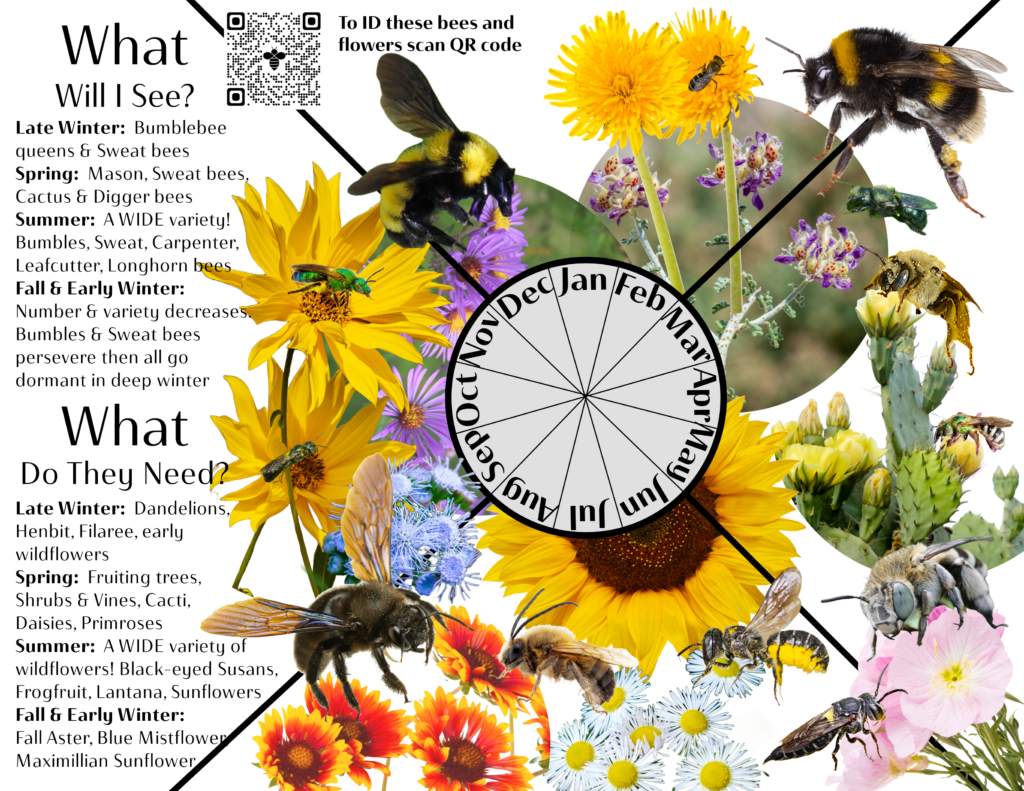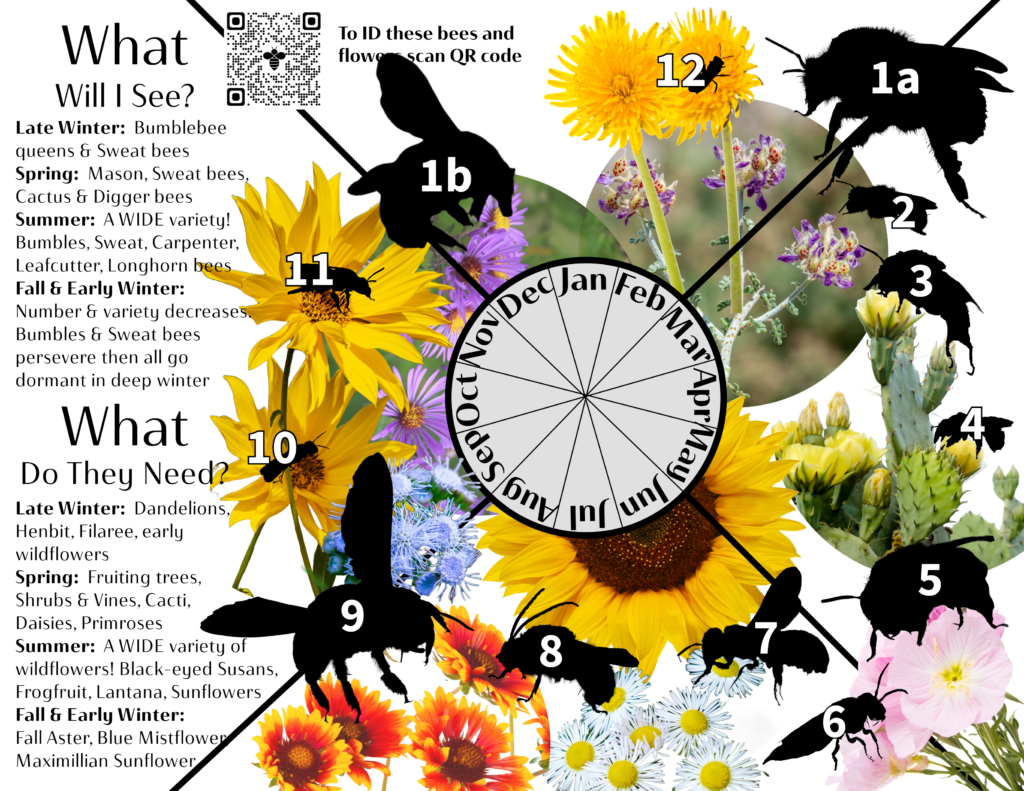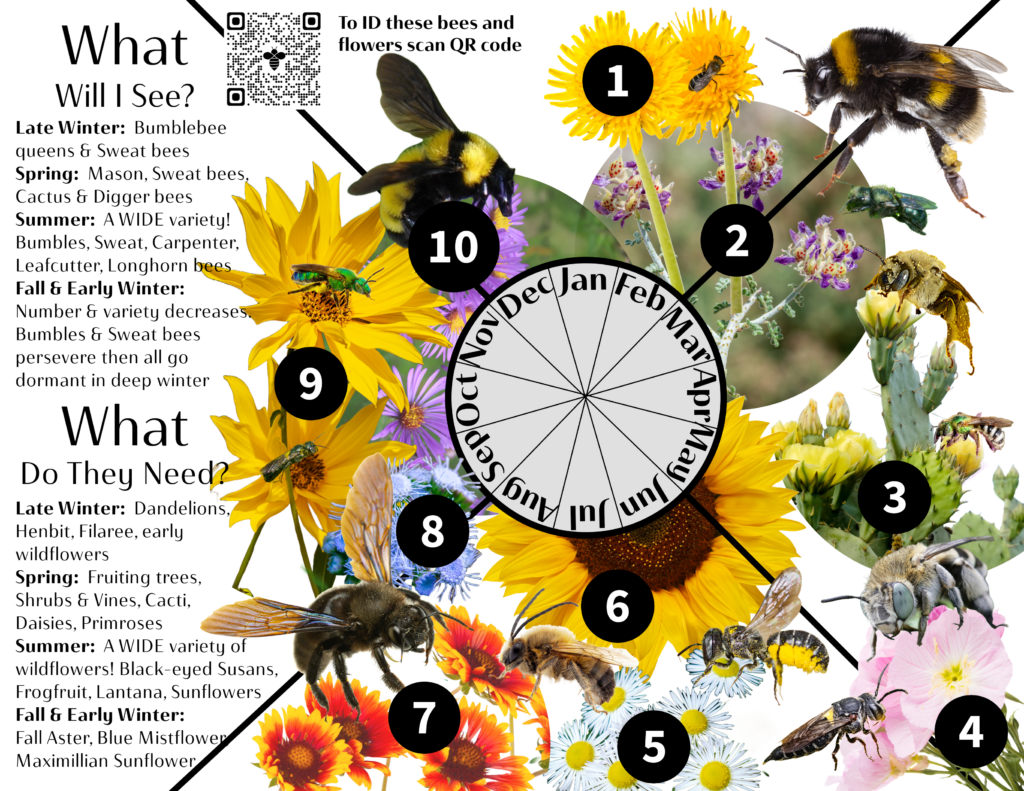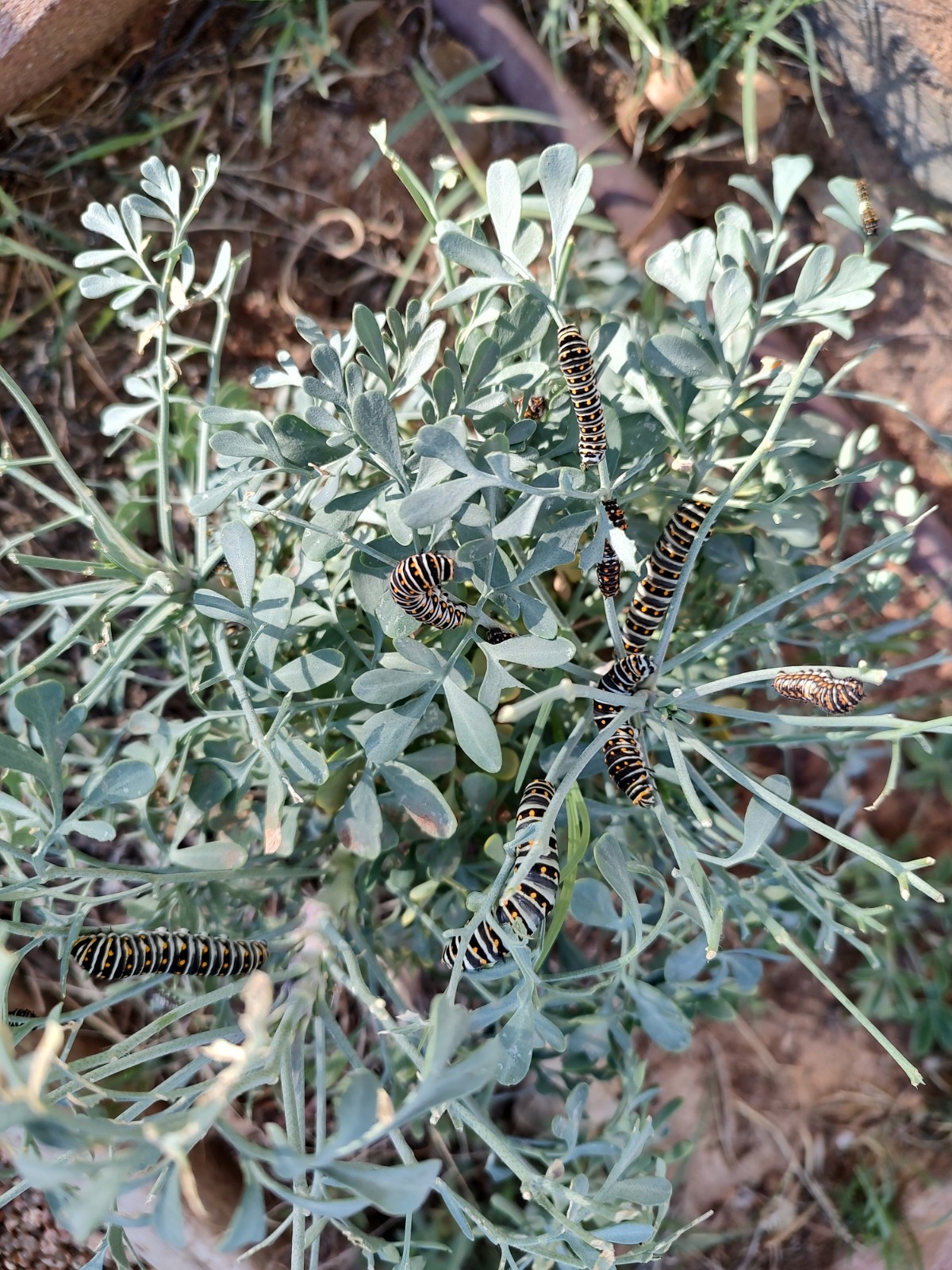To learn more about the Great Sunflower Project, and how important sunflowers are to bees, monarchs, and other butterflies, scroll down to the Sunflower and get started!
Knowing the importance of our native bees (and not just the honey bee which is not native) is critical to understanding the interrelationships of humans and their environments. Our barren green lawns do not sustain these important pollinators and their survival is key to our own. As Master Naturalists, we want to create pollinator gardens, learn about our native bees and help others understand their significance to agriculture and native, wild lands. Bee ID is a tricky endeavor, but one that will bring many rewards! If you are looking for some fun crafts for children relating to bees or butterflies, please go to our FunZone page.
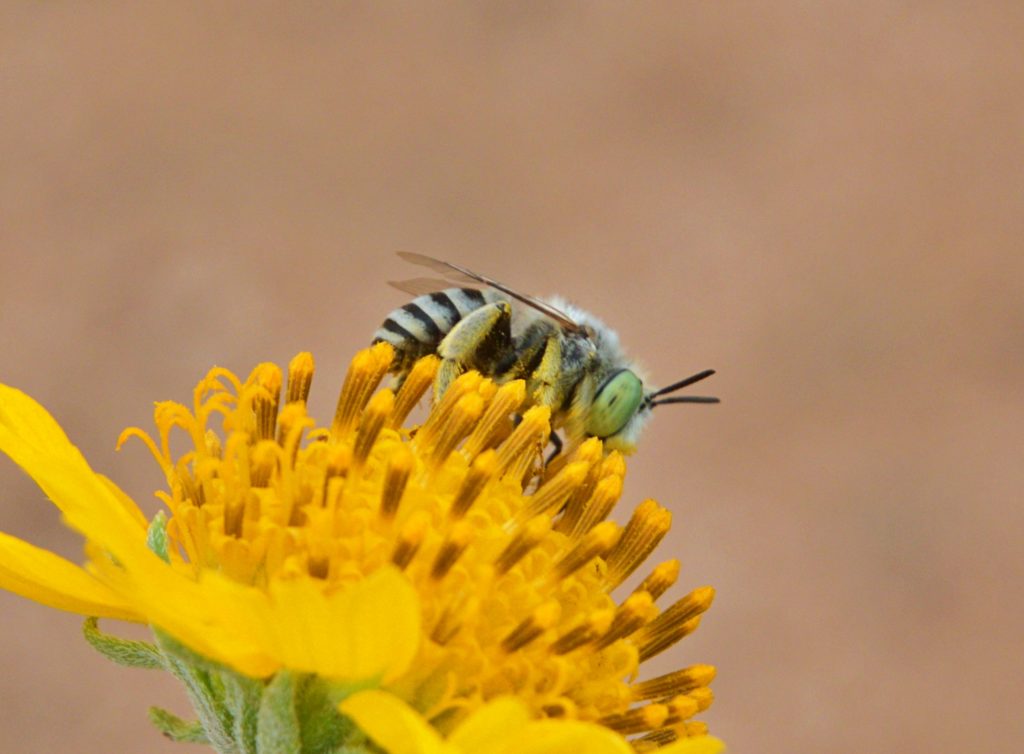
LETMN Bee Brochure
- American Bumblebee, 1b Sonoran Bumblebee
- Mason Bee
- Cactus Bee
- Sweat Bee-Agapostemon
- Digger Bee
- Cuckoo Bee
- Leaf-cutter Bee
- Long-horned Bee
- Carpenter Bee
- Small Sweat Bee
- Sweat Bee-Agapostemon
- Sweat Bee-Lasioglossum
- Dandelion
- Feather Dalea
- Prickly Pear Cactus
- Primrose
- Fleabane Daisy
- Sunflower
- Blanket Flower (Firewheel)
- Gregg’s Blue Mistflower
- Maximillian Sunflower
- Fall Aster
Great Sunflower Project of LETMN
Planting sunflowers is one of the best ways to support native bees, butterflies, and monarchs. The type of sunflower is your choice, any will do really, though we do recommend you try to plant a native like Prairie Sunflower (seeds can be collected from roadsides or gotten from the Centennial Seed Library or Permian Basin Master Gardeners).
Be a part of the Great Sunflower Project: https://www.greatsunflower.org/
Plant your sunflower in a sunny spot and keep it watered well. It can be in the ground or in a large pot. Once the sunflower blooms, monitor it for important pollinators like bees and butterflies and take pictures with your camera or phone. You can upload them to iNaturalist or social media with the hashtag #llanoestacadotmn or send them to us at [email protected] We will put your pictures on our Facebook page and thank you for supporting our native bees and butterflies!
To provide a host plant for butterflies to lay eggs that will become caterpillars plant herbs like rue, dill, parsley or fennel.
When the sunflower creates a seed head and the seeds are mature, you can just leave it and let it reseed itself, collect the seeds to plant next year, cut the head off and hang on a fence or from a tree for birds to enjoy, or prepare the seeds to eat for yourself. Leave the stalk until next spring or cut and lay on the ground for insects to nest in. Don’t tidy up your garden or pithy plants until the next spring. You can also cut them up and bundle together with twine or a zip tie and hang from a fence or tree.
Have fun learning about pollinators and sunflowers by coloring the Great Sunflower coloring page below.
Great Sunflower Project Coloring Page
Our important humble bumble!
If you didn’t know, bumble bees are native bees and are important buzz pollinators of some specific plants including tomato plants. Honey bees cannot pollinate tomato plants, so we need to conserve these special native bees. TPWD has a great guide for Texas bumble bees: https://tpwd.texas.gov/huntwild/wild/wildlife_diversity/nongame/native-pollinators/bumblebee-id.phtml
One of the easiest ways to help our bumble bees is to plant sunflowers. One sunflower can support up to 100 bees! They are easy to grow, provide nectar and pollen for bees (and butterflies) and then seeds for other wildlife (including ourselves!). The stalks can be made into bee hotels or left in the yard or garden for stem nesting native bees to use for their homes.
Learn more about the importance of sunflowers for bee conservation at: The Great Sunflower Project
The many ways our LETMN Sunflower Squad germinated sunflowers

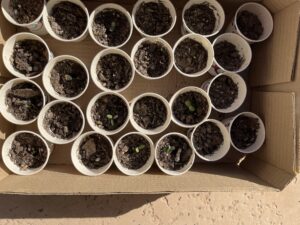
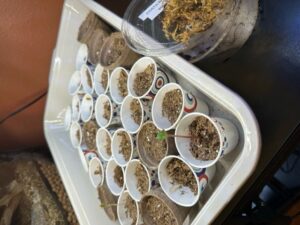


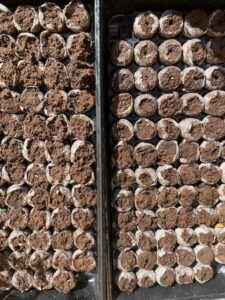
Here is a bee brochure on central Texas with lots of good information.
Bees come in all shapes, colors and sizes! Here is a general poster to give you an idea.
Bee, Fly or Wasp?
To get started on the adventure of learning to identify native bees you need to know how to distinguish them from flies and wasps. The following are some resources to learn the difference between bees, wasps and flies:
Best Bee ID Guidebook to Start
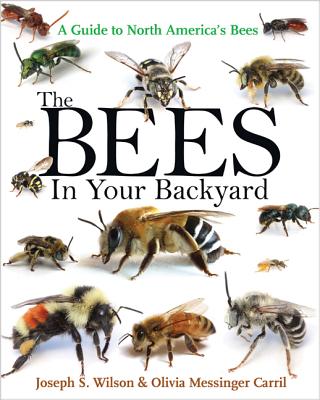
LETMN started a Native Bee Survey of the Llano Estacado!
The native bees of the Llano Estacado will be documented in several ways including:
1. Photographic surveys of public and private properties, city and state parks, Sibley Nature Center, I-20 Wildlife Preserve, and other areas will be made and posted to projects in iNaturalist including Adopt-A-Loop (GTWT), Bees and Wasps of Texas (TNT), scheduled TPWD and LETMN BioBlitzes and any other projects representative of the Llano Estacado.
2. Representative bee collections will be made of the same above areas (with permission where required) using netting and/or traps with non-toxic dawn dish soap and water; collections are not for private use and will be eventually donated to educational or research institutions or deposited at partnering museums.
3. Educational materials for outreach programs through LETMN will be created in order to teach others about the importance of native bees, how to identify them, and related conservation concerns including such things as planting native plants, creating pollinator gardens and preserving native habitat.
4. New for 2023! We are expanding into some new areas for trapping. We will also be trying to make more floral associations with out native bees and flowers.
LETMN Members who wish to participate will be going through extensive training with local scientists and TPWD staff to learn to how to properly collect and identify native bees.
If you are interested in participating in the above project as an LETMN Member, email us at [email protected]. You can become part of the Beeple group. If you are not a member of LETMN, you can join and get started on a lifelong adventure to learn about things like native bees! Email us at the above address for more information on meetings, workshops and resources.
Beeple Group can access an area with more resources and information under the menu item LETMN Beeple Group. You will need a password to access this area.
Unit 13: Entomology Curriculum Guide for Master Naturalist trainees
The Curriculum Guide also has a list of vocabulary and an important bee diagram created by Dr. Shaun McCoshum to help you learn the parts of the bee to help you take better diagnostic photographs and understand the detailed nature of bee identification.



